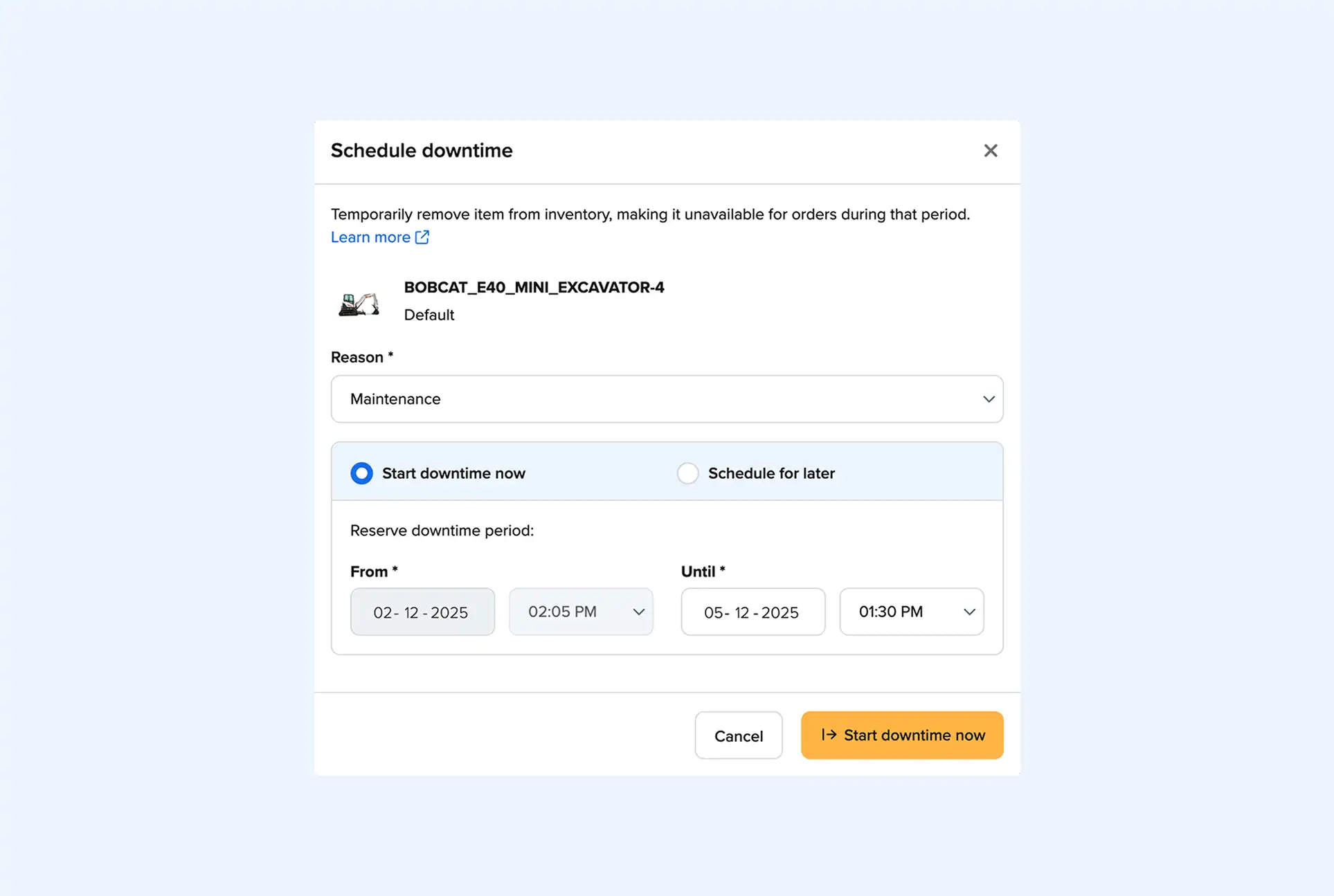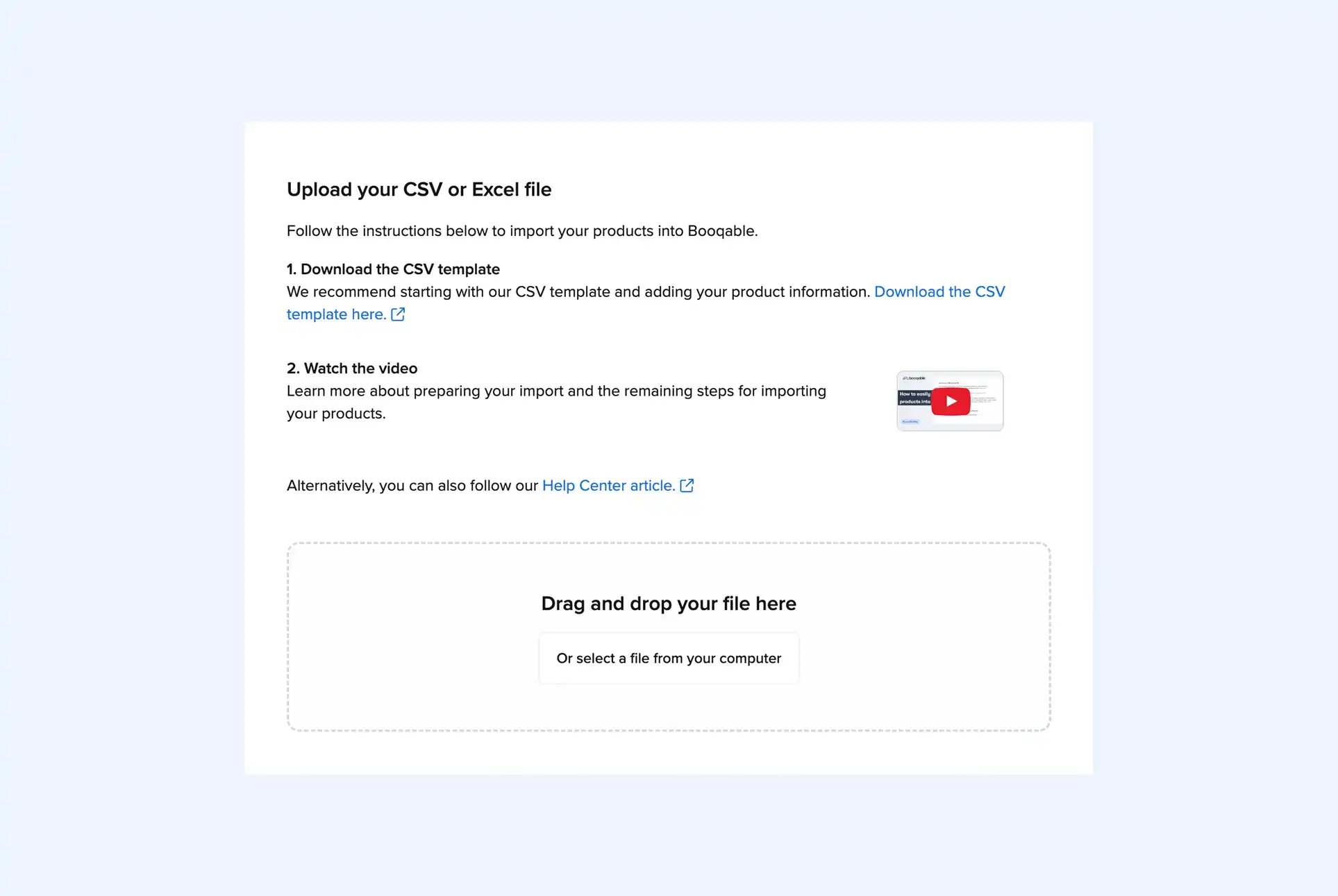Inventory management is a crucial aspect of running a successful rental business. Whether you’re renting out equipment, tools, or decor, effectively managing your inventory can significantly impact your bottom line. You can make data-driven decisions to stay ahead of the competition by tracking KPIs.
To ensure profitability and customer satisfaction, rental businesses must implement key performance indicators (KPIs) and metrics that provide insights into their inventory management processes. This blog post will explore some of the most essential KPIs and metrics for rental businesses.
As we work to improve our reporting feature, we’d like the share the insights we have discovered while researching these improvements. Some of these KPIs will be available in the reporting within the Booqable app in the future when we share our reporting update.
1. Rental equipment utilization rate
The equipment utilization rate is a critical metric for businesses that rent out equipment or machinery. It measures the percentage of time your equipment is rented out compared to its total availability. The formula for calculating equipment utilization is:
Equipment Utilization Rate = (Total Rental Hours / Total Equipment Hours Available) x 100%
A high utilization rate indicates that your equipment is in demand and generating revenue. Conversely, a low utilization rate may suggest the need to promote specific equipment or consider retiring underused items.
Benefits of maintaining a high utilization rate:
- Maximizes your return on investment (ROI) for each piece of equipment.
- Reduces idle equipment costs and increases revenue.
- Shows that your equipment is in demand, which can attract more customers.
Start your rental business for just $29/month
Put your toes in the water and test the demand in your area with a rental website for just $29/month.
2. Average rental duration
The average rental duration is an essential metric that helps rental businesses understand how long customers rent their assets. It can be a valuable indicator of customer behavior and inventory turnover. Monitoring this metric allows firms to adjust rental terms, identify seasonal trends, and plan for maintenance schedules more effectively.
Why average rental duration matters:
- It helps tailor your rental terms to customer preferences.
- Allows you to plan maintenance and servicing schedules effectively.
- Affects your revenue projections and resource allocation.
3. Rental yield
Rental yield is a metric that calculates the revenue generated per unit of inventory. It helps rental businesses understand which items are most profitable and which may need pricing adjustments or promotions. The formula for calculating rental yield is:
Rental Yield = Total Rental Revenue / Total Inventory Value
By optimizing the rental yield, businesses can focus on renting out higher-margin items and improving their profitability.
4. Inventory aging
Inventory aging measures the age of individual items within your inventory. It is crucial for businesses with perishable or depreciable assets, such as event rental companies. By categorizing the list into age groups (e.g., 0-30 days, 31-60 days, 61+ days), rental businesses can identify slow-moving items and implement strategies to reduce obsolescence.
The importance of inventory aging
- Allows you to take proactive measures to sell or liquidate aging inventory.
- Minimizes the risk of carrying obsolete items.
- Keeps your inventory fresh and appealing to customers.
5. Stockout rate
The stockout rate measures how often you run out of a particular item that customers want to rent. A high stockout rate can lead to lost revenue and customer dissatisfaction.
Stockout Rate = (Number of Stockouts / Total Number of Stock Checks) x 100%
Monitoring this metric helps rental businesses adjust reorder points, forecast demand accurately, and optimize inventory levels to minimize stockouts.
Ways to minimize stockout rate
- Utilize forecasting and inventory optimization tools.
- Implement a robust restocking process.
- Share a story of a business that overcame stockout issues, improved customer satisfaction, and increased revenue.
6. Return on investment (ROI)
ROI is a critical KPI that calculates the return you receive on your investment in your rental inventory. The ROI formula is:
ROI = (Total Rental Revenue - Inventory Costs) / Inventory Costs x 100%
This KPI helps you assess whether your investment in inventory is yielding a profitable return or if adjustments are needed to your inventory mix.
Start with building your rental website
Every new rental business starts with a website to get their first bookings.
7. Maintenance costs as a percentage of revenue
For businesses renting out equipment, monitoring the cost of maintaining your inventory is vital.
Calculate the percentage of maintenance costs for your total rental revenue to ensure that maintenance expenses do not excessively affect your profits.
Maintenance Costs as a Percentage of Revenue = (Total Maintenance Costs / Total Rental Revenue) x 100
Tracking this KPI will help you balance maintenance expenses and profitability.
8. Customer satisfaction and Net Promoter Score (NPS)
Customer satisfaction is a qualitative KPI that can directly impact your business. Regularly survey your customers to gauge their satisfaction levels and use their feedback to make improvements.
Additionally, the Net Promoter Score (NPS) measures how likely customers are to recommend your rental business to others. High NPS scores indicate satisfied customers and can lead to increased word-of-mouth referrals.
Why customer satisfaction and NPS matter:
- High customer satisfaction fosters loyalty and repeat business.
- A high NPS indicates customers are willing to promote your business to others.
- Share a case study of a business that saw significant growth by focusing on improving customer satisfaction and NPS.
9. Rental cancellation rate
The rental cancellation rate tracks how often customers cancel their rental reservations. A high cancellation rate can lead to lost revenue and inefficient inventory management.
Rental Cancellation Rate = (Number of Rental Cancellations / Total Number of Rental Agreements) x 100%
Analyze the reasons for cancellations and work on minimizing them to improve the overall efficiency of your rental business.
10. Inventory holding costs
Inventory holding costs encompass all expenses related to storing your rental inventory, including rent for storage space, utilities, insurance, and security. This KPI helps you understand the overhead costs associated with maintaining your list and ensures that these costs don’t outweigh your profits.
Components of inventory holding costs:
- Storage costs
- Depreciation
- Insurance
- Opportunity cost
11. Revenue per customer
The revenue per customer KPI measures the average amount of money each customer spends on your rental business. To calculate this KPI, divide your total rental revenue by the number of unique customers during a specific period:
Revenue Per Customer = Total Rental Revenue / Number of Unique Customers
Tracking this metric is important because it can help you identify high-value customers, segment your customer base, and tailor your marketing and sales strategies accordingly. It also provides valuable information about customer behavior, such as whether they rent multiple items or use additional services, allowing you to upsell or cross-sell to increase revenue.
Join thousands of rental business owners
In the last 12 months, hundreds of people have started their business with Booqable.
Track essential inventory management KPIs
In the competitive world of rental businesses, effective inventory management is a key driver of success. Implementing and regularly monitoring the right KPIs and metrics can provide valuable insights into your inventory processes, helping you optimize efficiency, improve customer satisfaction, and maximize profitability.
While the KPIs mentioned earlier offer valuable insights into inventory management for rental businesses, tailoring them to your business’s specific needs and nature is essential. Remember that the key to successful inventory management is balancing meeting customer demand and minimizing holding and operational costs.




